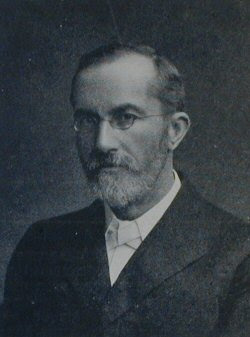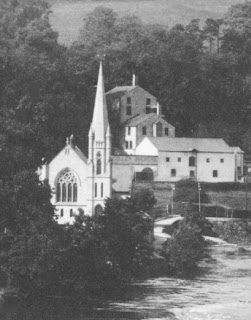The cross of Christ is at the centre of Christianity. It is, as James Denney so rightly said, The "diamond pivot" on which true religion turns. As such it has often been Satan's target. In 1841 a controversy on the subject broke out in the United Secession Church, and in such a way that Dr. Brown was all but at the centre of it.
Brown himself was utterly unfitted for it by the tragic death of his second wife after just over six years of marriage. She died in September 1841 after a decline in health following the birth of a child. John Brown was as devastated as he had been after the death of his first wife, and it was only his deep trust in God that kept Brown going.
The atonement controversy in the United Secession Church was of a relatively mild character. It was not that anyone had denied that Christ had died for sinners, but rather it was over the extent (or rather
intent) of the atonement
. James Morison, the young pastor of the United Secession Church in Kilmarnock, had become convinced of the Amyraldian view of the atonement and had been preaching and publishing his opinions with great zeal, concentrating on the universal aspect of the atonement to such an extent that many thought he was a full-blown Arminian. Morison had been a student of John Brown's, and the two had become very close friends. Morison himself was a very intelligent man, a gifted preacher and a scholar of no ordinary ability. Nevertheless his teaching on the atonement was held to be contrary to the Bible and to the Confession. he was charged with heresy on several counts, that on the atonement being "that the object of saving faith to any person is the statement that Christ made atonement for that person, as he made atonement for the sins of the whole world; and that the seeing of this statement to be true is saving faith, and gives the assurance of salvation."
The argument of the Amyraldian is substantially that unless Christ has in some sense died for all, then there can be no warrant of faith for any to come to Christ. Further, that if Christ has died for only the elect, then men will have little or no assurance, questioning whether or not they are elect.
That was Morison's argument. It falls down on both points. First, the Amyraldian has to say that Christ's death has a 'double reference', He died in one sense for the elect and in another for the reprobate. So only the Elect will beieve in Him, and He has died in their place only. Secondly, the introspective Christian is still tempted to unbelief, and to doubt if he or she has really believed.
Morison was deposed, but there were those who asked where he had obtained such views. True, Morison had gone further than any of his mentors, but was there a nest of Amyraldians in the Synod? Men whispered that John Brown had taught Morison the views of Moise Amyraut in the United Secession Hall, and Brown felt led to vindicate himself.
He wrote an article for the
United Secession Magazine of June 1841 dealing with Faith, human inability, the intent of the atonement and the Sonship of Christ (for Morison was also accused of denying the Eternal Sonship). The great difference on the question of faith between the two men was that Morison held saving faith to be in the proposition 'Christ died for me', whilst Dr. Brown held it to be in the love of God set forth in His sending His Son to die for ruined sinners. Thus he escaped the trap of Morison in founding assurance on an atonement that had in fact made nothing certain.
Brown did believe that the general aspect of Christ's death meant that ministers could call all to believe in Him who died for all, but he denied that Christ died for all equally.
It was only at this point that Brown was led to clearly state his views, using for the first time the two phrases, "general reference" and "peculiar or special reference" in relation to the death of Christ. Brown was no alone in this, his fellow professor Dr. Balmer also held to the Amyraldian scheme. Neither man saw this view as a deviation from strict Calvinism, and so they held and taught it in good conscience. Brown saw this as an intramural dispute between Calvinists on a question that had been left open by the Synod of Dort (this argument is used by Amyraldians today). Brown noted that Amyraut was cleared of heresy by the French Reformed Church, and that they were widely held by most of the Reformed Churches of Europe. What was more, he said, the Westminster Confession could not have intended to exclude Amyraldians. He closed with a plea for peace founded on the words of Andrew Fuller.
What the response to this plea was we shall see, God willing, next time.
Labels: John Brown Broughton Place





